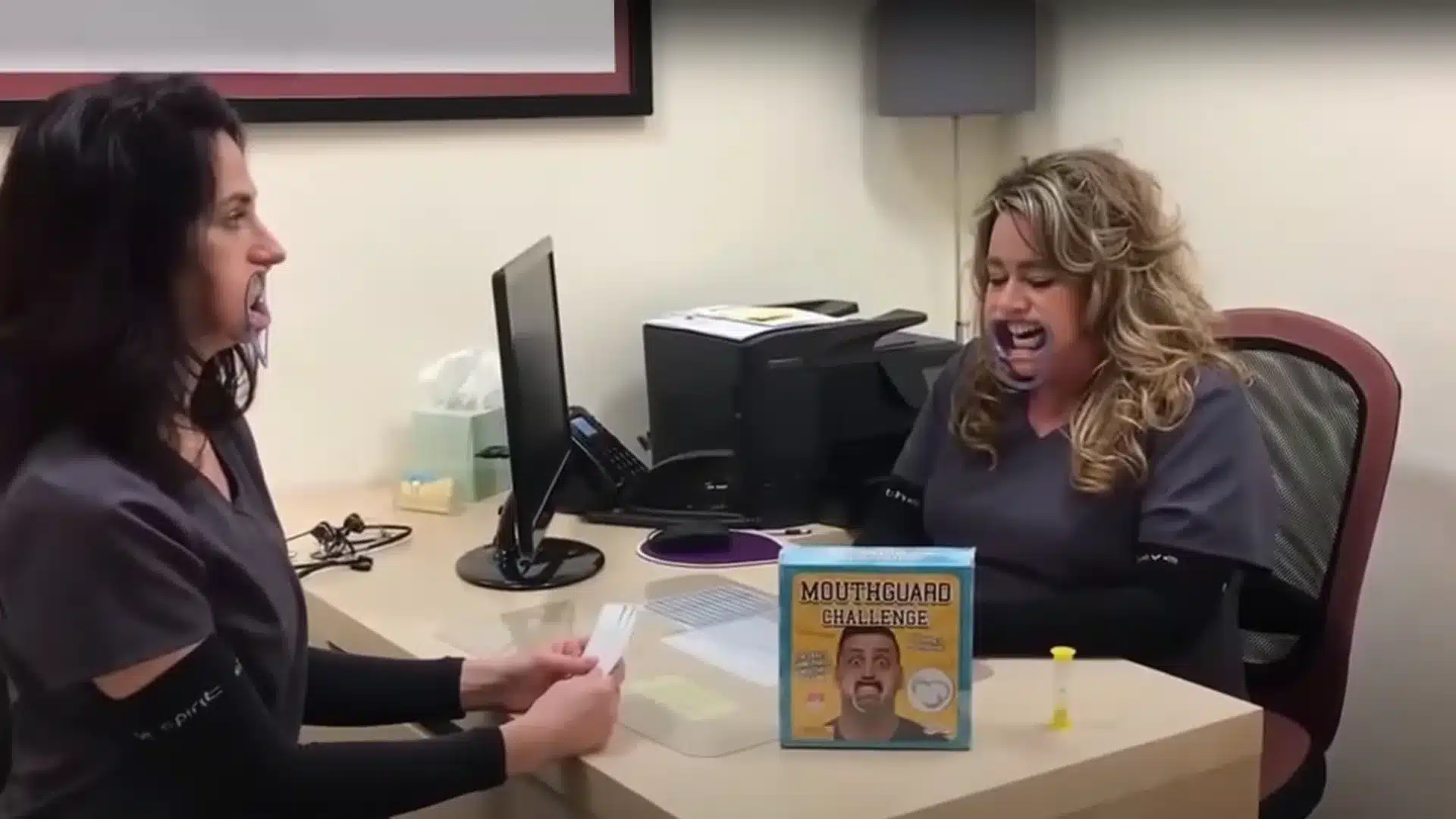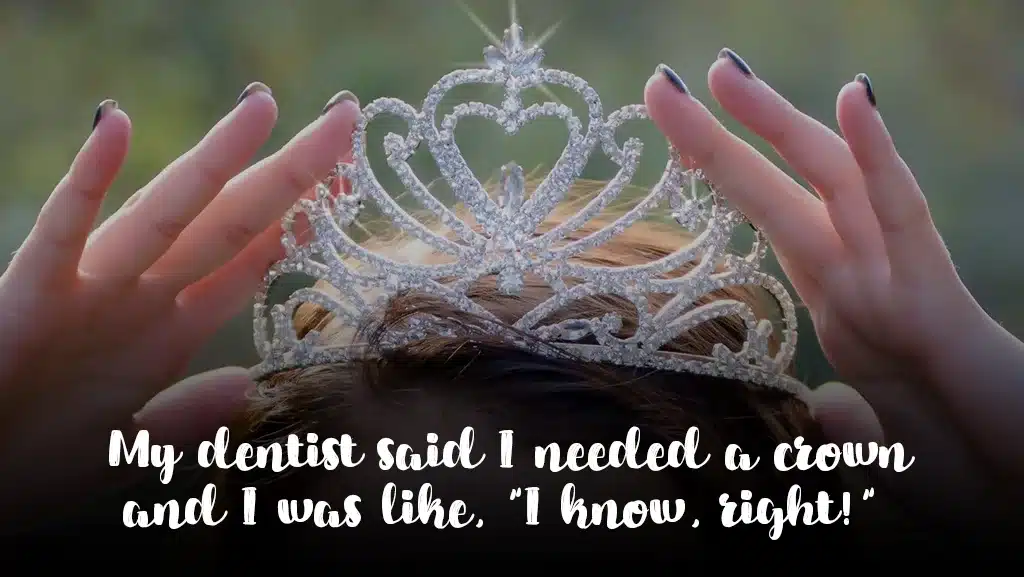I get a lot of questions from parents as they start to bring their kids in for regular dental check ups. Some people even wonder why they should bother treating children’s teeth since “the teeth are going to fall out anyway.” The truth is, good oral hygiene begins before your child’s teeth even erupt and treating baby teeth can help ensure healthy permanent teeth.
Baby Teeth and Permanent Tooth Eruption
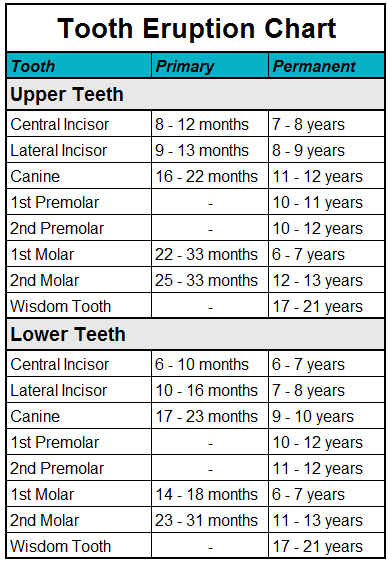
As you can see from the chart below, normal tooth eruption follows a bit of a pattern, but it’s important to remember that these are just standardized ranges and as we know, not all children exhibit the same growth patterns. For the longest time, I was a short skinny kid, it was only one summer during junior high that my growth spurt kicked in and I became the 6’5 specimen that now lectures you about flossing.
A total of 20 primary teeth (also called baby, milk or deciduous teeth), begin to erupt around 6 months of age. As with many developmental milestones, girls tend to precede boys when it comes to acquiring a new set of choppers. However, a general rule of thumb is that for every 6 months of life, approximately 4 teeth will erupt, where the lowers usually come in before the uppers.
The central incisors (front two on the bottom) are the first teeth to make an appearance, followed by the front four right above them. Other baby teeth slowly begin to fill in the gaps – usually erupting in pairs, mirroring each other; one on the right, one on the left – until all 20 have come in right around 3 years of age.
The next growth phase happens after age 4, when the jaw and facial bones begin to grow, creating space for the adult teeth.
Your Six-Year-Old’s Teeth
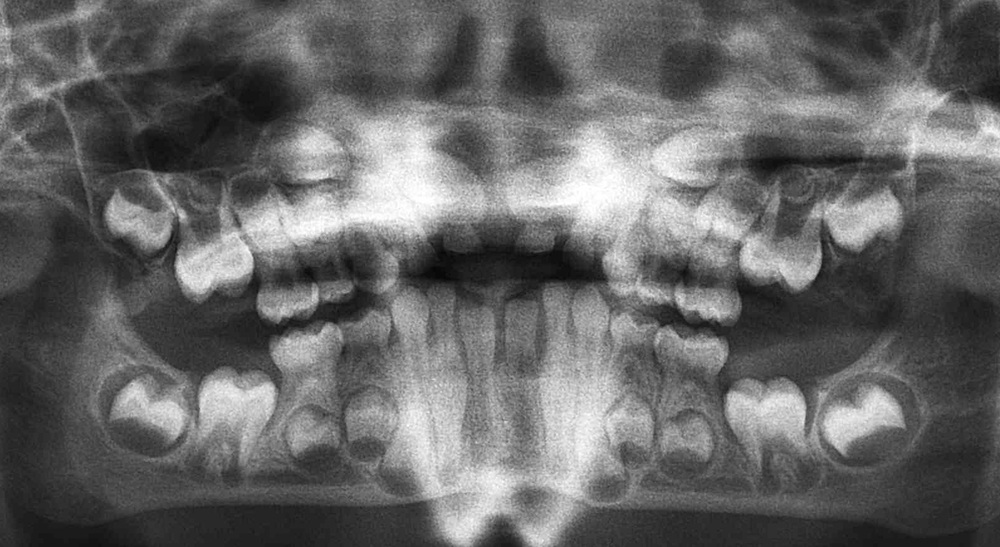
The tooth fairy will start to become a regular visitor at your house around your child’s sixth or seventh birthday as their permanent teeth start nudging them out. This dental xray of a 6-7 year old shows all the cute little baby teeth (those candy corn looking things) along with some permanent teeth “waiting in the wings.” The PANO xray allows us to see everything at once. PANO? Short for panoramic.
By age 21, all 32 of the permanent teeth have usually erupted.
What’s The Point?
Even though baby teeth are only in the mouth for a relatively short period of time, they do play an important role, and it is crucial that they are kept clean and healthy for developing good lifelong habits, as well as investing in healthy adult teeth for the future. Decay and infection in baby teeth can actually cause damage to the permanent ones that are developing under them. You can click on that xray image to see it larger if you can’t see those permanent teeth showing up.
Missing or rotten teeth can also make it difficult to chew all of those “good for you foods” we try and get kids to eat, like carrots and broccoli, which in turn makes for a pickier, often vitamin deficient child. Like adults, teeth help to give a face shape as well as help aid in the development of clear speech. Finally, they serve as ‘space maintainers’ for the permanent teeth that eventually grow in.
Growing Pains
A baby tooth that is not loose, isn’t much to be overly concerned about. Usually mother nature takes over, however, if it’s still being stubborn, I have a spare set of Tooth Fairy wings at the office and we can always help ‘nudge’ things along.
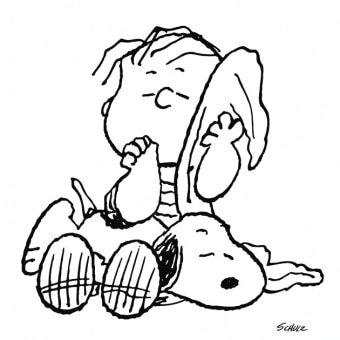
Unfortunately, this is also the age that I start to become unpopular with the thumb suckers. The domino effect on your child’s bite and facial structure as a result of using a pacifier or sucking fingers/thumb can be considerable, affecting the growth of the mouth, altering the shape of the roof, as well as the alignment of their teeth.
Because baby teeth are key in maintaining appropriate spacing for permanent teeth, it is extremely important to keep them healthy so that they are not lost too early. One of the ways in which we do this is to place sealants on the six year molars which helps to protect their teeth from the cavity prone years from 6-14 years of age.
While teeth do vary from person to person as far as size, shape and their location in the jaw, they all share the same purpose; to aid with chewing, speaking and smiling, as well as providing shape and structure to the face.
If your child is growing teeth, losing teeth, not growing teeth, or growing their second set, contact us to schedule an appointment or ask your specific questions. If they’re growing a third set of teeth, definitely call me, because we could make the front page of the National Enquirer!




